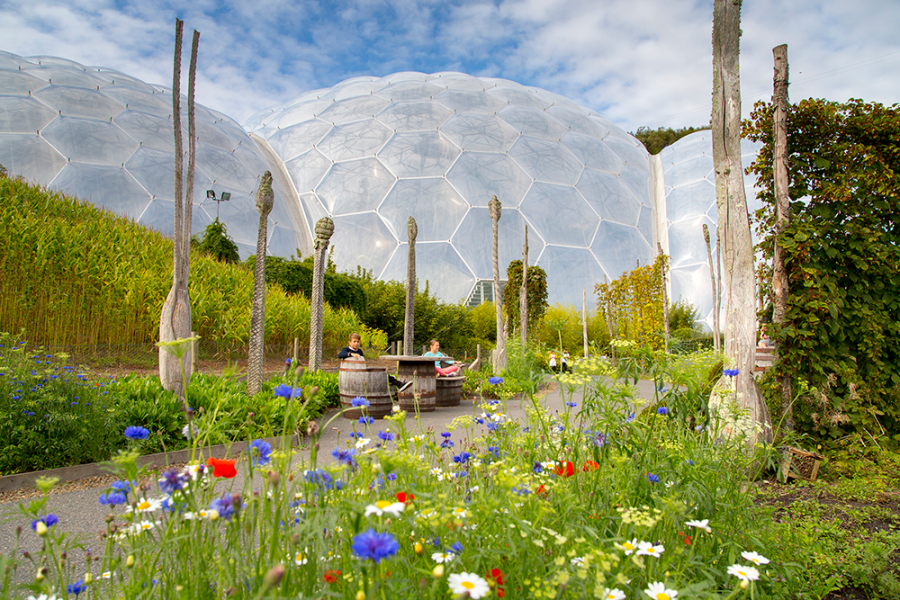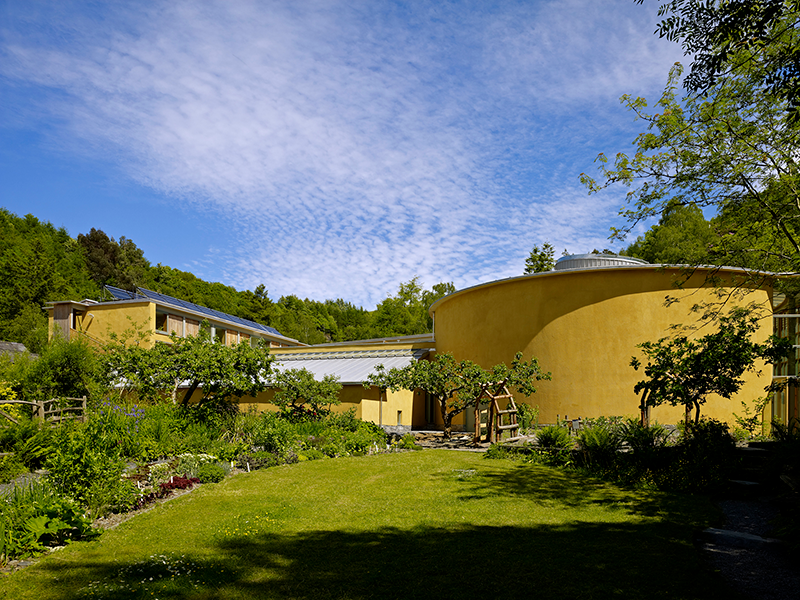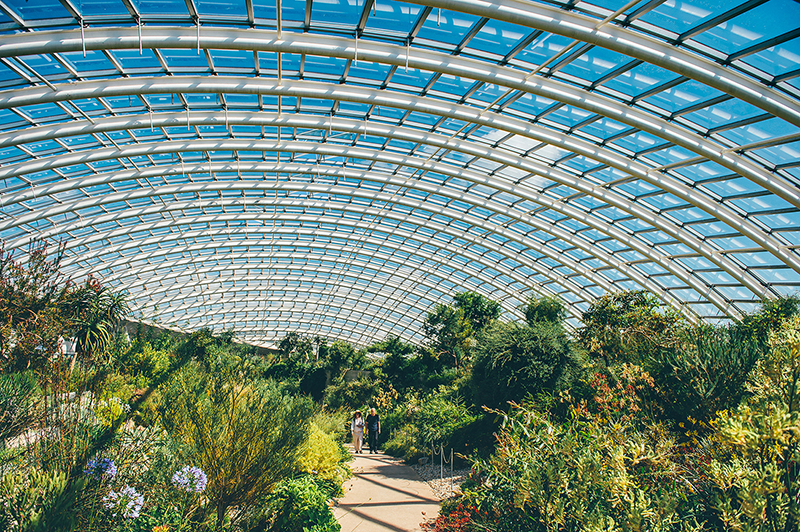Trends and Innovations in Sustainability for 2021

The pandemic’s global upheaval forced many companies to take a hard look at how they do business and their impact on the environment. Couple that with increasing global warming concerns and consumer desire to support eco-conscious businesses, and sustainability vaults near the top of business priorities.
Funworld reached out to several industry experts for their take on sustainability trends and innovations in 2021, along with eco-friendly lessons learned. Here’s what they say about greener agendas in the attractions industry.
Implement Easy Wins
Adopting greener practices often starts with simple things, notes Rachel Dodds, professor at Ryerson University and director of Sustaining Tourism, a boutique consultancy in Canada.
Dodds suggests easy wins, such as:
- switching to LED lighting
- using dual-flush toilets
- installing sensor-controlled lights and taps
- using alternative power generation (solar or hydro-electric versus gas or coal)
- using solar thermal heating for hot water
- recycling
- composting
- using plants for carbon capture and cleaner irrigation
Take a Team Approach
“One of the most important sustainability efforts we’d recommend is greater team engagement to create behavioral change and new social norms,” advises Scott Armstrong, chief operating officer of Planet Mark, a London-based environmental consultancy that provides the Planet Mark sustainability certification for businesses. By bringing employees onside with sustainability efforts, asking for their ideas, and forming green groups to share best practices, a business can empower its team to make positive changes to the way they work and think about processes that benefit the environment.
“Whether it’s recycling, energy efficiency, picking litter, or redirecting resources for the good of the community, team engagement will allow initiatives to get off the ground much faster and with greater enthusiasm,” Armstrong says.
For instance, the Houston Zoo established sustainability task forces focused on energy, water, and materials.
“They’re a great way to create engagement, cross-pollination of ideas, and shared ownership of sustainability efforts,” explains the zoo’s sustainability manager, Colley Hodges. Comprised of the zoo’s subject-matter experts and stakeholders, the groups meet monthly, and both big and small initiatives have emerged. Two dozen staff members have received their Leadership in Energy and Environmental Design (LEED) Green Associate credential since 2019, the majority being from the zoo’s facilities and operations teams with plans to engage other departments.
Go Green with Food and Beverage
“We recycle, compost, and work hard to have a zero-waste footprint in our entire culinary department,” says Anthony Pratt, director of business operations at Vancouver Aquarium Marine Science Centre in Canada. The aquarium doesn’t have any single-use plastics (straws, beverage lids, cutlery) in its dining areas and uses biodegradable cups and containers.
“We only offer Vancouver’s tap water—it comes filtered, fresh from the mountains, and is safe to drink,” says Pratt, noting that guests can use refillable containers at water dispensers throughout the building.
In Essex, Markshall Estate increased local sourcing in its café and plans to use zero-waste wine for catering and weddings in 2022.
“All our eco-attractions promote the selling of local food to reduce food miles and understand provenance,” says Emma Alesworth, executive director of Eco Attractions Group, based in the United Kingdom.

Rethink Transportation
Armstrong noticed more businesses adopting electric vehicles (EVs) this year to replace petrol and diesel fleet vehicles. He says a good time to switch to EVs is when fleet vehicle leases are due to expire. In addition to being a greener, cheaper fuel, EVs have lower servicing costs and produce cleaner air. Another trend? The introduction of EV charging for guests.
“With predictions of an increase in EVs on roads of up to 10 times current levels, we would encourage attractions industry operators to invest in EV charging facilities for guests,” advises Armstrong. “Not only does this position them well in the long-term—when EV charging becomes an expectation, not just a differentiator—but in the short-term, it could actually contribute to the take-up of EVs if a barrier to purchase is worrying about not being able to charge on a holiday or day out.”
Move Toward Cleaner, Alternative Energy
As the first carbon-neutral themed resort, PortAventura World in Spain offsets 100% of direct emissions produced by its activities, according to Choni Fernández, the company’s environment sustainability governance director. While this effort started back in 2008, the attraction continues to focus on energy efficiency, savings, and the orientation toward clean and renewable energies. PortAventura developed a “Smart Resort” project, connecting the different buildings and facilities to a CECO control room that operates 24 hours a day, 365 days a year.
“This investment allows centralized management of the facility’s safety and usage,” Fernández says. It can adjust the on/off times, operating the lighting, equipment, and facilities according to real needs, using state-of-art sensors and measurement and control systems. Fernández says that, not only have these measures resulted in significant energy savings, but the centralization helps identify areas to improve, as well as system deficiencies.
Reduce Plastic
When it comes to decreasing use of plastics, attractions often focus on food and beverage. Vancouver Aquarium does that too but takes it a step further, moving into retail.
“We developed our own eco-friendly and plastic-free plush toys, which we now supply to other attractions to help them go green,” Pratt explains. The aquarium worked with suppliers to replace plastic hooks on all plush (eliminating 76,000 hooks) and use recycled fill instead of plastic pellets (eliminating 85,000 pouches of plastic nurdles).
Partner with Like-Minded Vendors
The retail shops provided to attractions by San Diego-based Event Network are already single-use, plastic-free environments, using eco-friendly merchandising systems, flooring, fixtures, and energy-efficient lighting. But the company also partners with eco-friendly vendors.
“We offer apparel made from recycled plastic through our partnership with Kastlfel, which also supports organic cotton farmers working toward certification,” notes Andrea Froehle, vice president of marketing and communications for Event Network.
This past year, the company expanded its shop-in-shop experience with Tentree, a sustainable apparel brand that plants 10 trees for every purchase.
“Our branded visual storytelling integrates QR code signage that educates guests about the direct impact their purchase has on the environment,” Froehle says. The company regularly assesses its sustainability practices in the supply chain, distribution, and other back-of-house decisions that impact the environment.
Manage Waste
Noting the importance of proper waste management, Fernández advises separating as many classes as possible in order to revalue them and reintroduce them into the value chain.
“In our case, we have managed to recover more than the 90% of all the waste generated at PortAventura, in a real exercise of circular economy, obtaining the AENOR Zero Waste Certificate,” she says.

Embrace Retrofits
What’s on the sustainability horizon? Trials of retrofit technology to improve energy and water efficiency, according to Armstrong.
“As smart technologies and green innovation accelerate, there are more opportunities to implement relatively low-cost retrofits to improve the efficiency of existing kits,” he explains. Some of these technologies can significantly lower the operational intensity of A/C units and condensers, he says, thus reducing the associated emissions from powering them. Armstrong also says that water-saving technology for public toilets can significantly reduce water wastage, save money on sewerage charges, and save Scope 3 emissions associated with water supply.
Explore New Technology
A silver lining of the pandemic was that it forced organizations to explore new ways to use technology and to become more flexible, paving the way toward more sustainable operations, says Hodges.
“Without the challenges of 2020, an employee telecommuting policy would have taken years to develop as a stand-alone sustainability initiative to reduce emissions from employee commutes,” he explains.
“Instead, the pandemic accelerated that process and gave us a blueprint for significantly reducing Scope 3 carbon emissions.”
Alesworth points out that many in the Eco Attractions Group—such as The Eden Project, The Centre for Alternative Technology, Pensthorpe Natural Park, and The National Botanic Garden of Wales—have adopted online booking systems. She says this helps with resourcing, visitor flow, and waste management.

Get Educated
In 2021, the Houston Zoo began the design phase for multiple buildings, one of which is exploring an innovative mass timber structural system. Wood is generally regarded as a more sustainable option (compared to steel or concrete) since it has lower emissions over its lifetime.
“This and other construction projects led us to do a deep dive into our use of wood on campus, through the lens of sustainability, as well as general operations, focusing on everything from species selection to maintenance practices,” Hodges explains.
It also presented a chance to open lines of communication with outside partners on their practices surrounding wood.
“This self-education effort has been a great example of how to integrate sustainability into broader zoo operations and use it as one criterion for decision-making,” Hodges says.
The Bottom Line
“There’s really no excuse for most attractions around the world to not become more sustainable,” Dodds says. “The consumer is demanding it, the technologies exist, and it’s often a mass cost saver because the less energy you use, the less you pay.”
